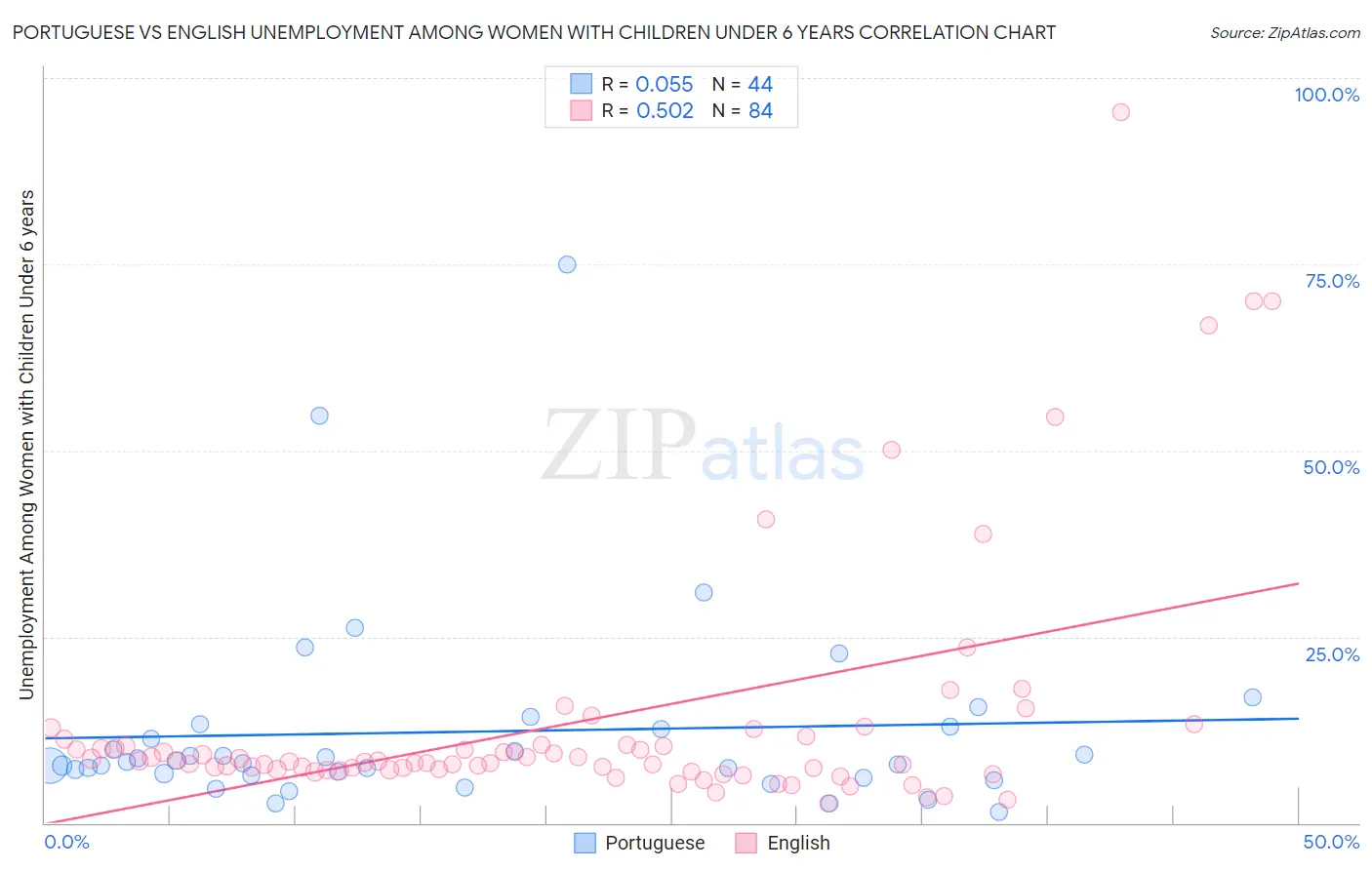Portuguese vs English Unemployment Among Women with Children Under 6 years
COMPARE
Portuguese
English
Unemployment Among Women with Children Under 6 years
Unemployment Among Women with Children Under 6 years Comparison
Portuguese
English
8.0%
UNEMPLOYMENT AMONG WOMEN WITH CHILDREN UNDER 6 YEARS
6.2/ 100
METRIC RATING
227th/ 347
METRIC RANK
8.0%
UNEMPLOYMENT AMONG WOMEN WITH CHILDREN UNDER 6 YEARS
7.2/ 100
METRIC RATING
224th/ 347
METRIC RANK
Portuguese vs English Unemployment Among Women with Children Under 6 years Correlation Chart
The statistical analysis conducted on geographies consisting of 329,007,301 people shows a slight positive correlation between the proportion of Portuguese and unemployment rate among women with children under the age of 6 in the United States with a correlation coefficient (R) of 0.055 and weighted average of 8.0%. Similarly, the statistical analysis conducted on geographies consisting of 378,453,397 people shows a substantial positive correlation between the proportion of English and unemployment rate among women with children under the age of 6 in the United States with a correlation coefficient (R) of 0.502 and weighted average of 8.0%, a difference of 0.26%.

Unemployment Among Women with Children Under 6 years Correlation Summary
| Measurement | Portuguese | English |
| Minimum | 1.4% | 2.6% |
| Maximum | 75.0% | 95.4% |
| Range | 73.6% | 92.8% |
| Mean | 12.3% | 13.7% |
| Median | 8.1% | 8.3% |
| Interquartile 25% (IQ1) | 6.5% | 7.2% |
| Interquartile 75% (IQ3) | 12.8% | 10.5% |
| Interquartile Range (IQR) | 6.3% | 3.3% |
| Standard Deviation (Sample) | 13.3% | 16.6% |
| Standard Deviation (Population) | 13.2% | 16.5% |
Demographics Similar to Portuguese and English by Unemployment Among Women with Children Under 6 years
In terms of unemployment among women with children under 6 years, the demographic groups most similar to Portuguese are Senegalese (8.0%, a difference of 0.010%), Immigrants from Sudan (8.0%, a difference of 0.030%), Salvadoran (8.0%, a difference of 0.18%), German (8.0%, a difference of 0.22%), and Finnish (8.0%, a difference of 0.25%). Similarly, the demographic groups most similar to English are German (8.0%, a difference of 0.030%), Carpatho Rusyn (8.0%, a difference of 0.13%), Senegalese (8.0%, a difference of 0.25%), Samoan (7.9%, a difference of 0.27%), and Immigrants from Germany (7.9%, a difference of 0.29%).
| Demographics | Rating | Rank | Unemployment Among Women with Children Under 6 years |
| Ecuadorians | 11.2 /100 | #215 | Poor 7.9% |
| Immigrants | Lebanon | 11.1 /100 | #216 | Poor 7.9% |
| Immigrants | Nigeria | 10.3 /100 | #217 | Poor 7.9% |
| Moroccans | 9.7 /100 | #218 | Tragic 7.9% |
| Arabs | 9.4 /100 | #219 | Tragic 7.9% |
| South American Indians | 9.3 /100 | #220 | Tragic 7.9% |
| Immigrants | Germany | 8.5 /100 | #221 | Tragic 7.9% |
| Samoans | 8.4 /100 | #222 | Tragic 7.9% |
| Carpatho Rusyns | 7.8 /100 | #223 | Tragic 8.0% |
| English | 7.2 /100 | #224 | Tragic 8.0% |
| Germans | 7.0 /100 | #225 | Tragic 8.0% |
| Senegalese | 6.2 /100 | #226 | Tragic 8.0% |
| Portuguese | 6.2 /100 | #227 | Tragic 8.0% |
| Immigrants | Sudan | 6.0 /100 | #228 | Tragic 8.0% |
| Salvadorans | 5.5 /100 | #229 | Tragic 8.0% |
| Finns | 5.3 /100 | #230 | Tragic 8.0% |
| Trinidadians and Tobagonians | 5.3 /100 | #231 | Tragic 8.0% |
| Welsh | 5.0 /100 | #232 | Tragic 8.0% |
| Immigrants | Trinidad and Tobago | 4.8 /100 | #233 | Tragic 8.0% |
| Kiowa | 4.4 /100 | #234 | Tragic 8.0% |
| Comanche | 4.3 /100 | #235 | Tragic 8.0% |